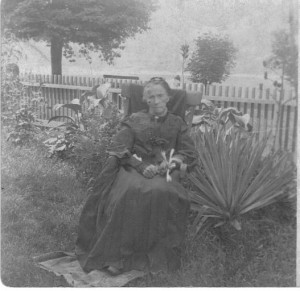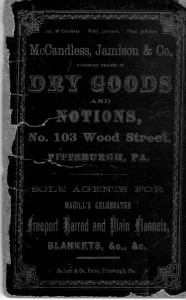Site Introduction
In the fall of 2006, I inherited a journal recounting a lively steamboat trip on the upper Missouri River in 1869. The author, Nancy Ann (Poe) Ebert, was my great-great grandmother. Her journal entries are full of danger. Her trip with her husband, Capt George Washington Ebert, was one continuous adventure. That was what it was like to be on the frontier – unsteady on the edge of life. Could anything be more thrilling? It is a bit of American History that I shall attempt to bring to life for the first time in No Place for a Lady.
Only two journals, daily written, chronicle that 1869 Missouri River season. The styles could not differ more, yet their comparison provides meaningful insights. In his journal Nelson G Edwards, first clerk of the steamer Henry M Shreve, was objective. Nancy Poe Ebert, wife of the captain, was observant and emotional. First person accounts by frontier woman are disappointingly rare. My great-great grandmother wrote about loneliness, fear, flowers, disappointment, beauty, and Indians. Cree Indians with their recently taken scalps boarded the str Mollie Ebert for three days causing much anguish. Nancy Poe Ebert expressed the fear of losing her hair to the tomahawk and scalping knife. It was the stuff of nightmare. Tracking the two journals, the sidewheeler Henry M Shreve was 8-14 days ahead of the sternwheeler str Mollie Ebert at common positions per date along the Missouri.
My transcription of the Nancy Poe Ebert (NPE) journal, NPE Journal Segment 1 and NPE Journal Segment 2 , is a rendering with spelling errors and missing punctuation uncorrected. Nothing has been tampered with. Its length is 59 pages covering 57 grueling days.
Investigations of the inherited journal and boxes of old photographs and letters led to other stories about the men and women of Georgetown, PA. During the Golden Age of Steamboats which some describe as the period from 1850-1870, Georgetown produced some far-famed steamboat captains. Each captain (Capt Jacob Poe, Capt Adam Poe…) and each steamer (Amelia Poe, Argyle…) has its tale. My job is to rescue what history I can, so that the river does not take all of it.
At a time when railroad transportation meant traveling mostly in upright chairs in unheated soot filled cars that rocked and pitched their way along state imposed “standard” gauge track, steamboats were admired for their luxury, their comfort, their ornamentation — in a word – their style. Contrary to popular opinion, steamboats also out performed the rival railroads during the Golden Age. More troops and supplies were transported by packets than railroad cars during the Civil War. If you do the math, an army the size of a city could not travel more than two or three days without shifting its base along the line of some railroad or river. Indispensable as railways were, in the western theater they were far inferior to rivers. With respect to security, the river lines of supply and communication could not be cut as easily as rails by the enemy. Rivers to be sure were military highways. These Georgetown captains and pilots with their civilian crews were contracted and impressed into service by the Army Quartermaster leading to many tales. These Georgetown captains owned and operated approximately one hundred packets during this Golden Age.
Lots of local histories about Georgetown live on: the grisly death of a steamboat captain far from home in April 1850 (The Body), a Paul Revere like ride to warn the area of the danger of attack from Morgan’s Raiders in July 1863 (The Ride), a baseball game with Honus Wagner and his All Stars in August 1924 (The Game), Georgetown’s frontier fort (The Lost Frontier Fort), etc. I am a retailer, not an inventor, of these tales. Vexingly, these stories have been virtually ignored by generations of historians.
It could write itself, this kind of story. A few stitched together anecdotes, more about this and that, a bit of wandering about. It would be nostalgic. And I am not interested in nostalgic. I want to know the relationships between the Georgetown steamboat captains and their places in history. I want to understand the lost wealth and glamour from more than a century ago. I want to walk where they walked. I want to know who are in the pictures I have inherited These simple objects, a small cache of photographs and letters, have become a part of my life. Each object has a story to tell – intertwined with memories. As times passes, my inheritance does not become clearer, it becomes thinner. I must sort it out now or it will soon disappear and be forgotten.
My hope is that this account will serve some historical purpose. I aim to tell something of these Georgetownmen and their boats, and to relate something of their stories of river life. At first it was hard to see their appeal. Slowly, I became aware that the streets of Georgetown , which I had walked every day as a child, had a hidden history. The Georgetown steamboat history holds ten mysteries for every one that has been solved. Their stories, about early river transportation, their efforts during the Civil War, and their Missouri River trips to Montana, spoke about a series of hardships and obstacles to overcome. A history that, as I read taking notes, at first surprised and then astonished me. Now it makes me both angry and sad. It is a story unwritten. The boats themselves disappeared more than a hundred years ago. The masters and pilots, engineers and clerks, mates and roustabouts have likewise gone. Today, the lives of those who manned the steamers are legendary, almost mythical. This is a story of the steamboating Georgetown people. It is a story of aspiration, fortitude, and brio. This story was not a story of my choosing, but what could make a better story!
Some people are born with or develop a great interest in the Ohio River. Others inherit it. Most of what follows is true. The rest is rumor, folktale, and myth. The errors are mine.
Copyright © 2009 Francis W Nash
All Rights Reserved
No part of this website may be reproduced without permission in writing from the author.


